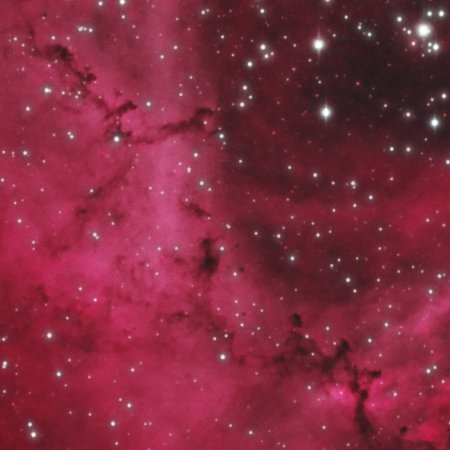With a good blast, and after a long break, I can finally start posting astrophotography again! After a long and unnerving planning, setting up and breaking in time, my remote observatory is now (kinda) ready.
What?! A remote observatory? - you might ask.
Living in Finland comes with its perks, but this is far from the ideal country for the avid astrophotographer. Long winters oppressed by stubborn clouds, and then darkness-free summers mean that there are too few chances to image, and too many to get frustrated.
So I took the plunge and shipped my gear over to good folks at AstroCamp, where it’s taken good care of, under an amazingly dark and steady sky which is mostly cloud free.
I’m still warming up my gears, but I’ve already got a little to show. This image, available also in pure HST palette and whose every detail can be seen at its AstroBin page (just click on it), was the work of a few nights. I still have some flexure to deal with, and I’m going to move to an off-axis-guider. As I said, still plenty of work till the current setup can be made optimal.
The Rosette Nebula is a large, circular H II region located near one end of a giant molecular cloud in the Monoceros region of the Milky Way Galaxy. The open cluster NGC 2244 (Caldwell 50) is closely associated with the nebulosity, the stars of the cluster having been formed from the nebula’s matter.
The cluster and nebula lie at a distance of some 5,200 light-years from Earth (although estimates of the distance vary considerably, down to 4,900 light-years.) and measure roughly 130 light years in diameter. The radiation from the young stars excite the atoms in the nebula, causing them to emit radiation themselves producing the emission nebula we see. The mass of the nebula is estimated to be around 10,000 solar masses.
It is believed that stellar winds from a group of O and B stars are exerting pressure on interstellar clouds to cause compression, followed by star formation in the nebula. This star formation is currently still ongoing.
(source: Wikipedia.)

